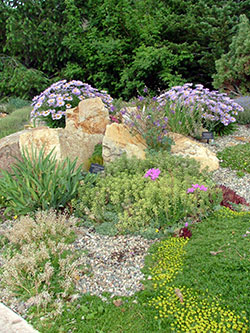
Unlike gardening developed for the cloudy, maritime areas in so much of the western world, Colorado’s unique weather opens up a wealth of gardening possibilities. The invigorating climate of mountains and high plains provides abundant sunshine for plant photosynthesis, low humidity that minimizes plant disease, and scant precipitation that helps control the water plants receive.
One of the characteristics of the type of climate Colorado shares with parts of Asia and the mountainous interior of South America is a fantastic diversity of plant species. While it’s true that trees don’t thrive in these areas, a number of herb-like plants and shrubs do.
Another characteristic of these areas is the creation of a microclimate because of the interplay of sunshine and terrain. A microclimate is a climate of a small area that is different than the climate of the larger area it is in. For example, the climate of an area shaded by a building is a microclimate. Objects can create a climate for plants only feet away from a vastly different climate. This opens a wealth of possibilities to savvy gardeners.
Gardeners are realizing that the potential for growing plants in Colorado is tremendous. Not only are plants native to the West being brought into gardening, adapted plants also are being introduced from the semi-arid areas of Africa, Asia and South America. Many of these plants would rot in wet climates, but thrive in this area’s dry air and abundant sunshine.
A unique Colorado regional gardening style is possible with adapted plants and practices. The adventure is as close as the soil outdoors, the nearest nursery, botanic gardens and Colorado State University Extension offices. Why not explore Colorado gardening today?
For more information, see the following Colorado State University Extension fact sheet(s).



